Today’s Current Affairs: 27th July 2024 for UPSC IAS exams, State PSC exams, SSC CGL, State SSC, RRB, Railways, Banking Exam & IBPS, etc
Table of Contents
NOvA (NuMI Off-axis νe Appearance) Experiment:
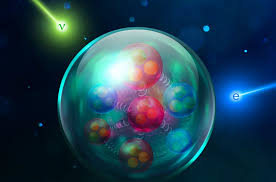
New data from the NOvA experiment deepens the mystery surrounding the mass of Neutrinos.
- NOvA (NuMI Off-axis νe Appearance) is an experiment to study one of nature’s most elusive particles: neutrinos.
- It is managed by the U.S. Department of Energy’s Fermi National Accelerator Laboratory, located outside of Chicago, United States of America.
- Fermilab sends a beam of neutrinos 500 miles north to a 14,000-ton detector in Ash River, Minnesota.
- By measuring the neutrinos and their antimatter partners, antineutrinos, in both locations, physicists can study how these particles change their type as they travel, a phenomenon known as neutrino oscillation.
- NOvA aims to learn more about the ordering of neutrino masses.
Neutrinos:
- They are elementary subatomic particles with no electric charge, very little mass, and 1/2 unit of spin.
- They travel at near light speeds.
- They belong to the family of particles called leptons, which are not subject to the strong force.
- They are often called ‘ghost particles’ because they barely interact with anything else.
- They are, however, the most common particle in the universe. Approximately 100 trillion neutrinos pass completely harmlessly through your body every second.
- Every time atomic nuclei come together (like in the sun) or break apart (like in a fission reactor or particle accelerator), they produce neutrinos.
Dark Oxygen:
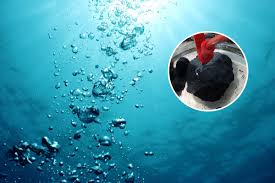
Scientists have recently discovered a strange phenomenon, dubbed “dark oxygen” in the deep sea.
- Dark Oxygen is being produced in complete darkness thousands of feet below the ocean surface is termed dark oxygen.
- Until now, it was thought that oxygen was created only through photosynthesis, a process that requires sunlight.
- Oceanic plankton, drifting plants, algae, and some bacteria are the primary elements attributed to the production of oxygen in the ocean.
- All these organisms are capable of photosynthesis.
- The production of oxygen at such depths is thought to be impossible because there isn’t enough sunlight for plants to do photosynthesis.
- However, in this case, oxygen is not being produced by plants.
- The oxygen comes out of Polymetallic nodules that are similar in resemblance to lumps of coal.
- These nodules, made up of metals like manganese, iron, cobalt, nickel, copper, and lithium, can generate oxygen through electrochemical activity even in the absence of light.
- They are splitting H2O molecules into Hydrogen and Oxygen.
Polymetallic Nodules:
- Polymetallic nodules, also known as manganese nodules, are small, rounded accretions found on the seabed of the deep ocean floor.
Kargil Vijay Diwas 2024:

The Prime Minister is set to visit Kargil on the 25th anniversary of the Kargil Vijay Diwas.
- Kargil Diwas, also known as Kargil Vijay Diwas, is celebrated annually on July 26 to commemorate India’s victory over Pakistan in the Kargil War.
- The day celebrates the courage and sacrifice of Indian soldiers who valiantly defended the nation’s sovereignty.
- The year 2024 marks the 25th anniversary of Kargil Vijay Diwas.
- Kargil War was fought between India and Pakistan between May and July 1999 in the Kargil district of Kashmir and along the Line of Control (LOC).
- In an effort to ease these tensions, India and Pakistan signed the Lahore Declaration in February 1999, which aimed for a peaceful resolution to the Kashmir issue.
State Of The World’s Forests 2024 Report:
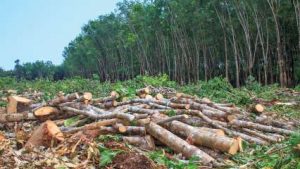
State of the World’s Forests 2024, released by the Food and Agriculture Organization (FAO) recently, has brought both relief and concern regarding the state of the world’s forests.
- World’s Forests 2024 Report is published by the Food and Agriculture Organization (FAO) of the United Nations.
- It provides a comprehensive analysis of forest conditions and trends.
Highlights of the Report:
- It highlighted a decline in deforestation rates compared to previous decades, with several countries showing significant improvements.
- The data also reveals a disturbing picture of the challenges forests face due to climate change.
- In 2020, the global forest covered approximately 4.1 billion hectares (ha), or 31 percent of the land area.
Russia, Brazil, Canada, the United States of America, and China account for 54 percent of the global forest area, in descending order. - Another 10 countries, including Australia, the Democratic Republic of Congo, Indonesia, Peru, and India, contribute about two-thirds of the global forest area.
- The report estimated that between 1990 and 2020, approximately 420 million ha of forest were converted to land use.
- However, deforestation rates fell from 15.8 million ha per year between 1990 and 2002 to 10.2 million ha between 2015 and 2020.
- Deforestation rates in Africa were 4.41 million ha, 2.95 million in South America, and 2.24 million in Asia.
- It also noted 10 countries recording annual gains in forest area in 2020, which include China, Australia, India, Chile, Viet Nam, Turkey, the United States of America, France, Italy, and Romania.
- India gained 2,66,000 hectares of forest annually from 2010-2020, ranking third globally in forest area gains.
- The global mangrove area was recorded to be 14.8 million ha, out of which South and Southeast Asia contributed almost 44 percent of the total global area.
- The rate of gross global mangrove loss decreased by 23 percent between the two recent decades (2000-2010 and 2010-2020), and the rate of gain in mangrove areas also decreased slightly.
- Asia was the major contributor to mangrove loss and gains.
- It is estimated that about 340-370 million ha (equivalent to less than half the land area of Australia) of the earth’s land area is impacted by annual fire.
- Satellite data revealed that total fires in 2023 emitted 6,687 megatons of carbon dioxide globally, more than double the emissions contributed by the European Union by burning fossil fuels.
Wind Demon:
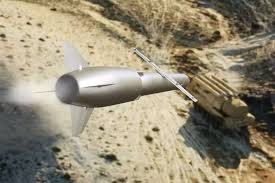
Israel Aerospace Industries (IAI) recently unveiled the country’s new air-to-surface missile dubbed “Wind Demon”.
- Wind Demon is an advanced air-to-surface cruise missile designed for precise, long-range attacks at a low cost.
- It was developed by Israel Aerospace Industries (IAI).
- The missile can be launched from a helicopter or aircraft and is capable of striking both mobile and stationary targets according to a predetermined plan without the need for operator intervention.
- With a range of over 200 kilometers and a weight of 140 kg, this missile is distinguished by its remarkable accuracy, with a Circular Error Probable (CEP) of just 1 meter.
- Its ability to fly at extremely low altitudes reduces the risk of detection, disruption, and interception, thus enhancing its operational effectiveness.
- Operators can choose from various speed profiles: fast, slow, fast, tailored to specific tactical requirements.
- The missile operates effectively both day and night and is equipped with an advanced electro-optical seeker with thermal capabilities.
- It also features laser spot tracking capabilities, and its warhead weighs over 20 kilograms.
Ketamine Pill:
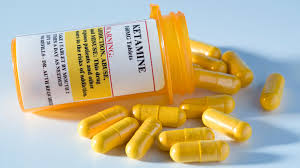
Reports have suggested that tablets that release Ketamine slowly can improve symptoms of depression with fewer side effects.
- Ketamine Pill also known as Ketalar, is a medicine that doctors use to make people not feel pain during surgeries.
- It is sometimes called a “party drug”, blocks the receptor for an excitatory neurotransmitter, those that cause neurons to stimulate and send messages, called glutamate.
- It is derived from a hallucinogenic drug Phencyclidine (PCP), it works by blocking the NMDA receptor in the brain and spinal cord, and increases a brain chemical or neurotransmitter called glutamate.
- It halts transmission of pain in the spinal cord and activates reward pathways of the brain.
- It is a dissociative anaesthetic with psychedelic properties and is used under strict medical supervision for anaesthesia and to treat treatment-resistant depression.
- Ketamine therapy is used to treat depression, anxiety, PTSD, end-of-life distress, chronic pain, drug/alcohol problems, and more.
- Potential side effects on the body include depression, cognitive issues, unconsciousness, and memory loss.
- It is a Schedule X drug in India, which means it is tightly controlled and even monitored on a case-specific basis by the prescribing doctor.
MERCOSUR:
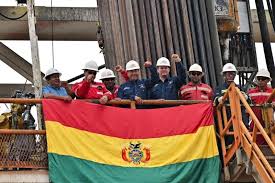
Bolivia became a full time member of MERCOSUR groupings in order to increase trades with member countries.
- MERCOSUR or the Southern Common Market is an economic and political bloc of Latin America.
- It originally comprised Argentina, Brazil, Paraguay, and Uruguay as its members. Bolivia and Venezuela joined it later. (Venezuela has been suspended since December 1, 2016).
- It was created in 1991 by signing the Treaty of Asuncion, an accord calling for the “free movement of goods, services, and factors of production between countries.”
- It aims to promote economic integration, free trade, and the movement of goods, services, and people among member countries.
- The bloc’s highest decision-making body, the Common Market Council, provides a high-level forum for coordinating foreign and economic policy.
- Its official working languages are Spanish and Portuguese.
- India and MERCOSUR signed the Preferential Trade Agreement (PTA) in 2004, which allowed India to forge closer economic ties with one of the world’s largest trade blocs.
- Headquarter: Montevideo, Uruguay.
Exercise KHAAN QUEST:
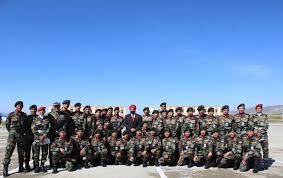
The Indian Army contingent departed for the Exercise KHAAN QUEST which is scheduled to be conducted from 27th July to 9th August 2024 at Ulaanbaatar, Mongolia.
- Exercise KHAAN QUEST is a multinational military exercise which will bring together military forces from around the world to collaborate and enhance their peacekeeping capabilities.
- Last edition of Exercise KHAAN QUEST was conducted in Mongolia from 19th June to 2nd July 2023.
- The exercise first started as a bilateral event between USA and Mongolian Armed Forces in the year 2003.
- Subsequently, from the year 2006 onwards the exercise graduated to a Multinational Peacekeeping Exercise with current year being the 21st iteration.
- The Indian Army contingent comprising 40 personnel is being represented mainly by troops from a Battalion of the MADRAS REGIMENT along with personnel from other Arms and Services. One Woman Officer and two Women Soldiers will also form part of the contingent.
- Aim of Exercise KHAAN QUEST is to prepare Indian Armed Forces for peacekeeping missions while operating in a multinational environment, thereby increasing interoperability and military readiness in peace support operations under Chapter VII of United Nations Charter.
- Tactical drills to be practiced during the exercise will include establishment of Static and Mobile Check Points, Cordon and Search Operations etc.
- The exercise will facilitate developing interoperability, bonhomie and camaraderie between soldiers of the participating countries.
Rashtrapati Bhavan Halls Renamed To Reflect Indian Cultural Values:

In a bid to align with Indian cultural values and reduce traces of colonial influence, Rashtrapati Bhavan has officially renamed two of its prominent halls.
- Durbar Hall is now Ganatantra Mandap, reflecting the Republic concept, replacing the colonial term ‘Durbar’ (courts and assemblies of Indian rulers and the British).
- Ashok Hall has been renamed Ashok Mandap, honouring Emperor Ashoka and Indian cultural significance. This change aims to remove anglicized influences and align with the ethos associated with the word ‘Ashok.’
- The Rashtrapati Bhavan statement mentioned that Ashok Hall was originally a ballroom. The word ‘Ashok’ signifies being free from sufferings or sorrow, and also refers to Emperor Ashok, a symbol of unity and peaceful co-existence.
- The word also refers to the Ashok tree, which holds deep significance in Indian religious traditions, arts, and culture.
- The Rashtrapati Bhavan in New Delhi is the largest residence of any Head of State in the world. It was originally built as the ‘Viceroy House’ for the British Viceroy of India and later renamed Rashtrapati Bhavan when India became a Republic in 1950.
- It was designed by British architect Sir Edwin Landseer Lutyens, who combined Indian, Mughal, and European architectural styles.
- In 2023, the world-renowned Mughal Gardens at the Rashtrapati Bhavan were also renamed as Amrit Udyan.
- Earlier in 2022, the PM inaugurated the ‘Kartavya Path’ symbolising a shift from erstwhile Rajpath being an icon of power to Kartavya Path being an example of public ownership and empowerment.
Successful Phase-II Ballistic Missile Defence System Test:
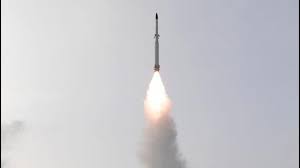
The Defence Research and Development Organisation (DRDO) has successfully tested its Phase-II Ballistic Missile Defence (BMD) system, showcasing India’s advanced capabilities in defending against long-range ballistic missile threats.
- The Phase-II system can intercept ballistic missiles with a range of up to 5,000 km, enhancing India’s strategic defence.
- Phase-I BMD, capable of intercepting missiles with ranges up to 2,000 km, has already been deployed.
- The Phase-II missile is a two-stage, solid-propelled, ground-launched system designed for endo to low exo-atmospheric interception.
- The test demonstrated a network-centric warfare weapon system, including long-range sensors, low-latency communication, and advanced interceptor missiles.
- The Indian Ballistic Missile Defence (BMD) Programme, initiated in 2000 after the Kargil War, aims to protect India from missile threats, particularly from Pakistan and China.
- It employs a multi-layered approach with interceptor missiles like Prithvi Air Defence and Advanced Air Defence. Recent efforts focus on enhancing capabilities through global cooperation and acquiring systems like the Russian S-400 Triumf.
- The DRDO is developing an indigenous multi-tier network to counter missiles with ranges of up to 2000 km and 5000 km in Phases 1 and 2, respectively.
- The network includes surveillance radars for the detection and tracking of incoming missiles.
- Ballistic missiles of India are Agni, K-4 (SLBM), Prahaar, Dhanush, Prithvi and Trishul.
Industrial Parks:
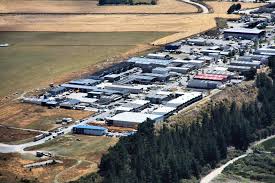
Twelve investment ready “PLUG AND PLAY” industrial Parks to be created under National Industrial Corridor Develpoment Programme: UNION BUDGET 2024-25
Industrial Parks:
- Industrial Parks are designated areas specifically developed to accommodate clusters of industrial activities.
- They offer specialized infrastructure and facilities to support manufacturing and business operations.
- Sri City, Andhra Pradesh: A large Special Economic Zone (SEZ) providing world-class infrastructure to attract global investments in various industries.
- Gautam Budh Nagar, Uttar Pradesh: An industrial park focusing on sectors like electronics, IT, and textiles, enhancing regional economic growth.
- Shenzhen Special Economic Zone, China: An industrial park that transformed Shenzhen into a major global manufacturing hub, boosting economic development and innovation.
- Silicon Valley, USA: A renowned industrial park for technology and innovation, housing numerous tech companies and startups, driving significant advancements in the tech industry.
Artificial Reefs:
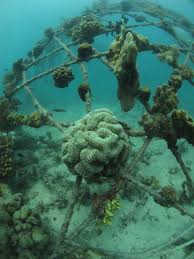
300 artificial reef modules were deployed in various shapes off the coast of Rameshwaram, Tamil Nadu, to enhance marine fisheries resources and coastal biodiversity.
- These reefs, located 3 nautical miles offshore at a depth of 6 meters, benefit fishermen from eight fishing villages.
- Artificial reefs are human-made structures placed on the seabed using biorock technology.
- This technology involves passing a low electrical current through water via electrodes near a steel structure, attracting dissolved minerals to form a calcium carbonate layer akin to natural coral reefs.
- These reefs provide hard surfaces for algae, barnacles, corals, and oysters to attach to, creating habitats for fish, absorbing carbon dioxide, and benefiting local fishing communities.




